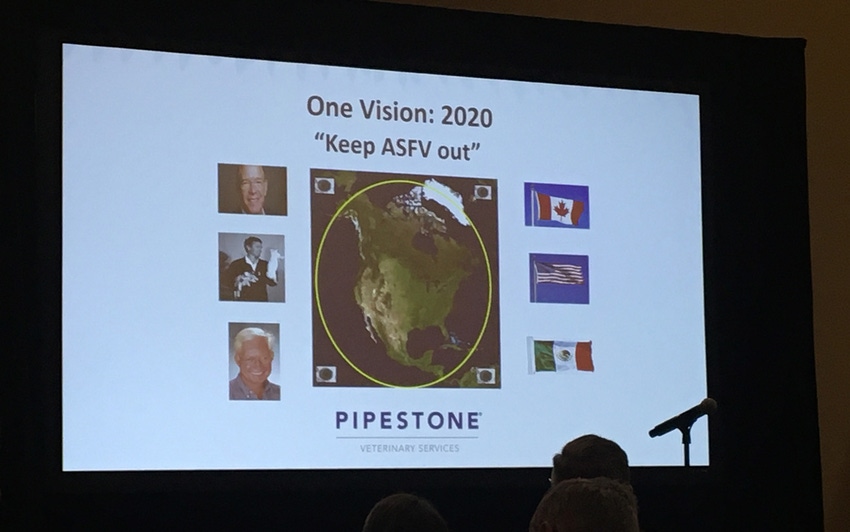Industry, government taking action based on science-based contaminated feed research.

After five years of scientific collaboration and industry research proving contaminated feed can be a risk factor for transboundary and domestic movement of viral pathogens, Scott Dee, director of research for Pipestone Applied Research, says the work is now making a significant impact on several levels.
For example, the Canadians have implemented for more than a year a regulatory program for importing feed ingredients from high-risk countries, which Dee says seems to be working very well. Pipestone's Responsible Imports program, a science-based means for safely introducing essential feed ingredients from countries of high risk was the basis for a policy that passed unanimously last week at National Pork Industry Forum. Finally, the National Pork Producers Council, along with more than 30 state pork associations, sent a letter to U.S. Secretary of Agriculture Sonny Perdue about the risk of importing feed ingredients from African swine fever-positive countries and how difficult it is to work with bulk volumes of high-risk products like soy and why there should be potential restrictions for bringing those types of products in.
"Again, all based on science, all based on the work you just heard. That's exciting," Dee told attendees during the Biosecurity session at the American Association of Swine Veterinarians Annual Meeting in Atlanta. "On the back side of that letter, 31 pork producer associations from the United States signed on in agreement. I haven't seen a document like this come out of the science-based side of things for a long, long time, so I'm really proud of what this group has done."
Dee's current research focus over the last year and a half has been testing how 15 different feed mitigants stand up to a challenge of porcine reproductive and respiratory syndrome 174, porcine epidemic diarrhea and Seneca Virus A. The multiple feed additives tested included medium chain fatty acid blends, organic acid mixtures, acid/aldehydes and others. The research team then tested the pigs at Day 6 and Day 15 for the presence of the three viruses and evaluated the animals for signs of disease and performance.
Dee says they soon found that not all mitigants are equal in regard to fighting off infection, but all the products reduced viral load as well as increased growth rate and reduced mortality. In the study, 14 of the 15 products performed extremely well and the research team saw improvements in performance despite the actual presence of the pathogen in the body of the pig.
"So, the mitigants are doing something to help the pig get through that infection, either reducing viral load or stimulating the immune response; the mechanism of action is unknown," Dee says. "Then of course, we've got some diverse chemistries. That's nice as we've got different inclusion rates for costs, making options for producers and mills."
Where will Dee's feed research take him next? In real time on roadways across America, he says as he refers to his "Demonstration Project," a technique taken from the social sciences where proven laboratory data are tried to be replicated in the real world. One of the Demonstration Projects involves taking feed, inoculating it with PRRS, PED and SVA and putting it in a transport vehicle in vented containers so it can experience all the different environments.
"We're starting in Minneapolis, Minn. The materials then travel through Denver, Colo.; Albuquerque, N.M.; across the Gulf Coast, up the Eastern Seaboard to Portland, Maine, and then back across the Midwest into Minnesota again. This is where SAM Nutrition is helping us understand, whether in a Demonstration Project format, can these viruses actually survive?" Dee says. "The journey will last 22 days, travel across 18 states and more than 6,000 miles, basically to validate whether our laboratory data, simulating survival over long distances and extended periods of time, is accurate. This is the kind of effort we have to go to convince, everyone in our industry, that contaminated feed is a valid risk factor."
As for further developments from 2020 research, Dee says he hopes to see a U.S. feed-risk program get established similar to the Canadian program, as well as Mexico joining the continental plan and taking more action on feed biosecurity measures.
"The vision is to keep it out," Dee says. "We all have to work together to keep this virus [ASF] and other foreign animal diseases out of our country and out of our continent."
About the Author(s)
You May Also Like





